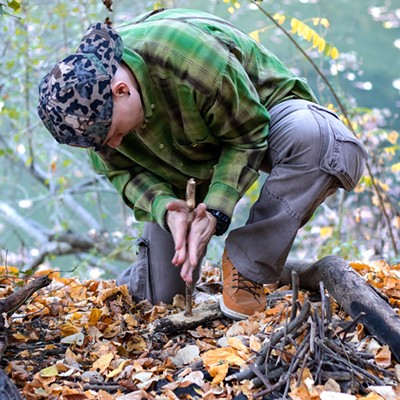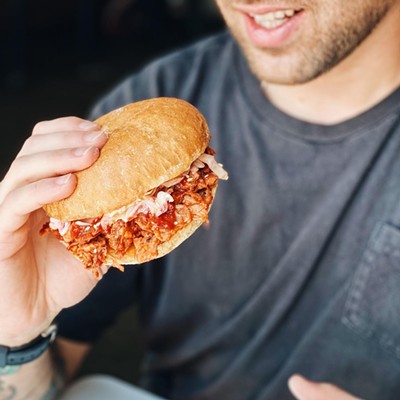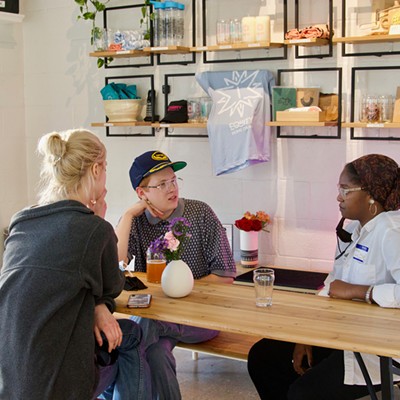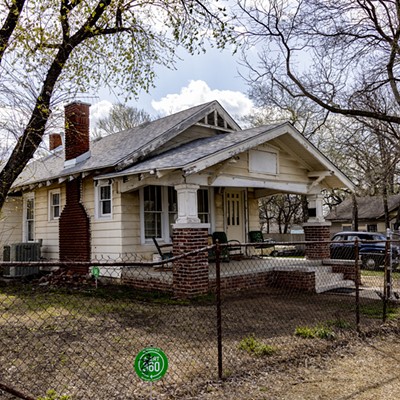Oklahoma City has modernized a ton over the last decade, and our population explosion makes our city one of the fastest-growing in the country. By many metrics, OKC is a great place to live. The arts and music scenes are bustling, the food is top-notch, and the cost-of-living is low, making living here a great value.
However, the roads are known for being rough, and traffic safety is generally poor. In 2021, the American College of Sports Medicine ranked OKC as the unhealthiest and least physically active in their American Fitness Index of the 100 largest cities in the US, and life expectancy here is lower than the national average.
Luckily, there is one simple change OKC could make to improve all these deficiencies and others — make OKC more bikeable.
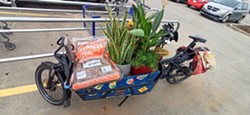
Anthony Carfang donates an enormous amount of time advocating for better bikeability in OKC, and he currently bikes nearly everywhere on an electric-assist cargo bike: to work, to run errands, and on adventures around town as he spends quality time with his 3-year-old daughter Isabella, his partner Jennie, and their dog Sagan.
Biking became Carfang’s primary mode of transportation over two decades ago in his hometown of Chicago and he’s also participated in competitive cycling over the years.
“Biking was the most efficient way to get around living in Chicago, and it was my main form of transportation since starting high school in 1999. I started racing road bikes in college in 2006, and riding/racing mountain bikes in 2009 after moving to Colorado,” Carfang said.
When he moved to OKC for work in 2014, he noticed a need for better bikeability in the city. “Moving from Colorado, I saw significant gaps in OKC’s infrastructure that would invite more biking and walking; a lot of it seemed like low-hanging fruit to easily address and make big strides,” Carfang said.
His cycling background along with his experience as a lead software engineer developing safety-critical flight software for military aircraft has prepared him for understanding the best ways to improve the safety of bike infrastructure across the city.
Carfang said it was easy to get involved in bike advocacy in OKC.
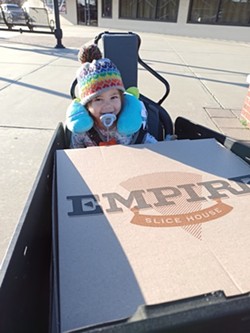
“City leaders, planners, and state legislators have all been very accessible. Further, many of these leaders were eager to hear from me and other members of the public, repeating vocally how much they want public input, to hear what’s important to our residents, and to work together to shape a positive future. So combining that leadership access with unifying the voice of advocates made it inspiring to push forward,” he said.
It hasn’t been all work and no play for him while he enjoys the social benefits of bicycle advocacy.
“While advocating for better policy and better infrastructure, it has been rewarding to invite individuals on a personal level to bike with me and my family for beer, food, or ice cream. Showing them how feasible and fun it can be to bike a short distance for these...trips has increased our city’s transportation biking (albeit slowly), while also building more public demand for better policy and infrastructure,” Carfang said.
Carfang shared a wealth of statistics that demonstrate how everyone benefits from living in a bikeable community.
When cities become more bikeable, it results in safer streets for everyone: cars, cyclists, and pedestrians. It also leads to longer-lasting roads due to lower car traffic, improves air quality, increases tourism, creates safer cities, tighter-knit communities, and higher levels of independence for those who cannot drive cars, primarily children and the elderly.
“This alleviates stress and time on parents...statistically, especially mothers,” Carfang said.
For some people, the only option for transportation is a bike, and for them, safe bicycle infrastructure is imperative.
“Many of the city’s transportation cyclists are those who are in a situation where there is no other choice – either because the cost of car ownership is too high, a physical impairment may result in driving being too uncomfortable or unsafe, and bus service may not be pervasive or convenient enough to serve their needs,” he said.

When people see others cycling, they feel safer trying it themselves, and they're motivated to ditch the car for short errands, leading to better overall health. It’s also been proven that children who regularly cycle or walk to school “have shown better engagement in school, with better ability to solve complex problems, and overall better aptitude,” Carfang explained.
Building better bike infrastructure also saves governments money and creates jobs.
“Bike infrastructure is cheaper by one to three orders of magnitude compared to car-based infrastructure on a per-mile basis. So money goes further. Even more, the finer detail of the projects results in costs going more to labor, and spreading further across material supply chains. So bike infrastructure projects end up impacting/creating more jobs than other infrastructure projects [according to the 2012 AASHTO study],” Carfang said.
With the invaluable MAPS Projects, most of OKC’s bike trail development has been for sport, and the culture around recreational cycling has increased in OKC over the last several years, but Carfang would like to see the development of safer routes for commuter cycling to work, for errands, etc.
“One-off events like Open Streets, or Bike To Work Day, or Bike/Walk to School Day has yielded a lot of people choosing to bike for that one event, but it hasn’t resulted in a routine choice. However, over the years living in Oklahoma City, while infrastructure and education have been improving, I’ve been seeing many more people biking for transportation. It’s been exciting to see, and keeps me motivated in my advocacy work. Many other wonderful advocates have emerged and help shoulder the workload,” Carfang said.
He currently serves on the Community and Neighborhood Enhancement Advisory Board for Ward 2, overseeing the implementation of our Better Streets Safer City sales tax projects, which includes about $168 million for street resurfacing, $20 bike trails, $15 million for on-street bike infrastructure, $25 million for sidewalks, and another $31 million for street enhancement projects.
“This includes providing my perspective to the projects and priorities, while also being a point of contact for the public to share their opinions on projects,” Carfang said.
He also serves as the government chair for BikeOklahoma, which works on policy issues with state legislators and departments of transportation. This work has led to real change and legislation that boosted Oklahoma’s ranking as a “Bike-Friendly State” by the League of American Bicyclists from 46th to 41st in a few short years.
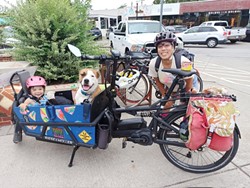
Carfang has big dreams for OKC, for the future of transportation, and the well-being of the city’s citizens.
“Simply put, I dream of an OKC where a majority of the population understand that there’s not always a need to use a car for all trips. By seeing inviting, safe infrastructure for walking and biking, some car trips can be substituted with other modes. Ideally, frequent pervasive bus service will follow too, further leading to safety, mode shift, and health,” he said. If you want to get involved with making OKC more bikeable, there are multiple ways to contribute.
“Email and call other advocates, and especially leaders. It can be as simple as stating that you want better bike infrastructure. It could go further stating how you like specific projects, or that you don’t bike but would if the infrastructure was good. It could be that you feel driving is too stressful, and better infrastructure would...[make] it safer for everyone...Sharing your personal story goes a long way,” he said.
There are several local organizations to join or follow if you’re looking for a community that is dedicated to safer cycling for everyone. You can join BikeOklahoma (OKBike.org), the non-profit, all-volunteer advocacy group. You can also check out the Oklahoma Bicycle Society (OKCBike.org) and @HideAndGoBike on Instagram.

